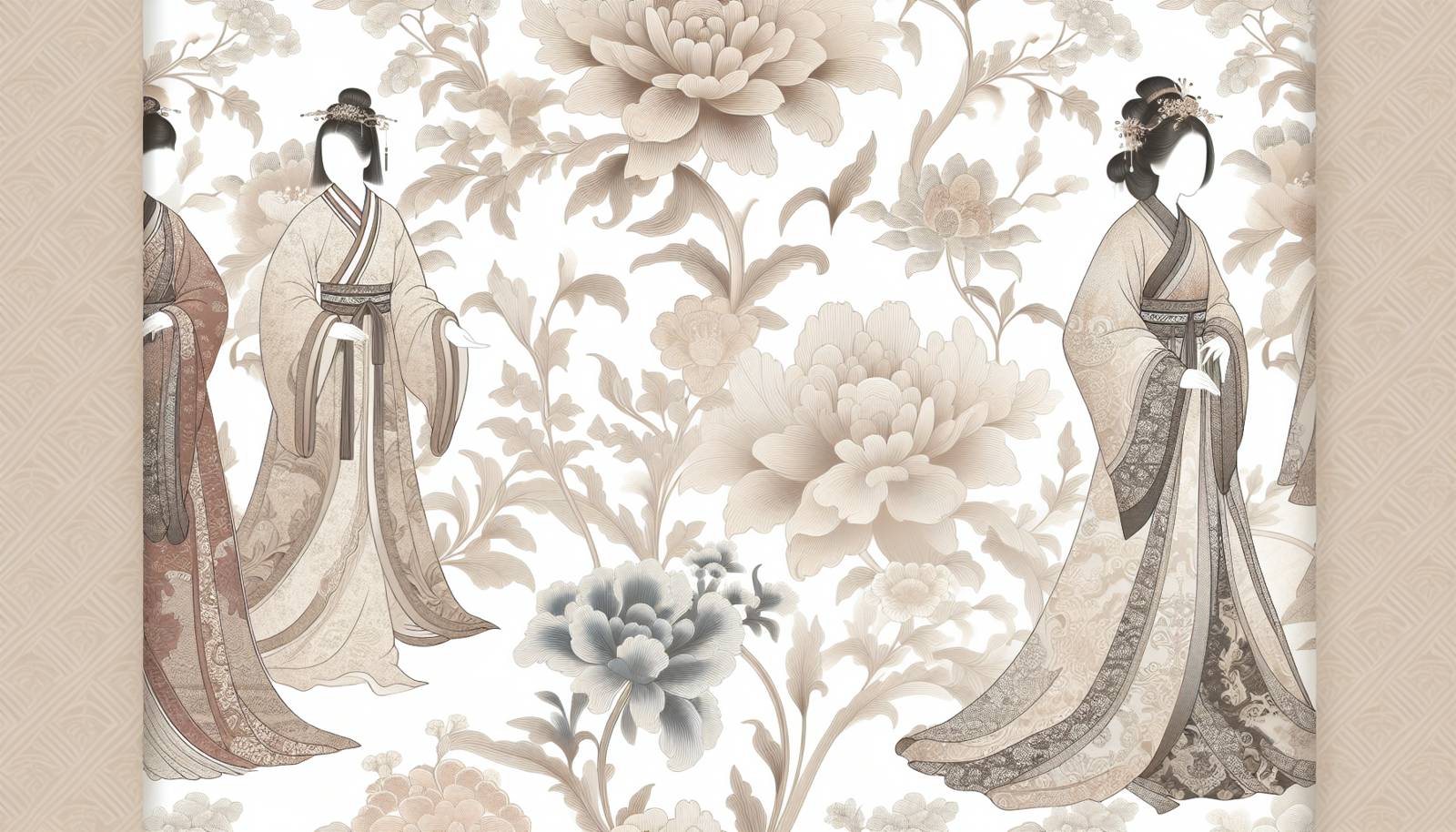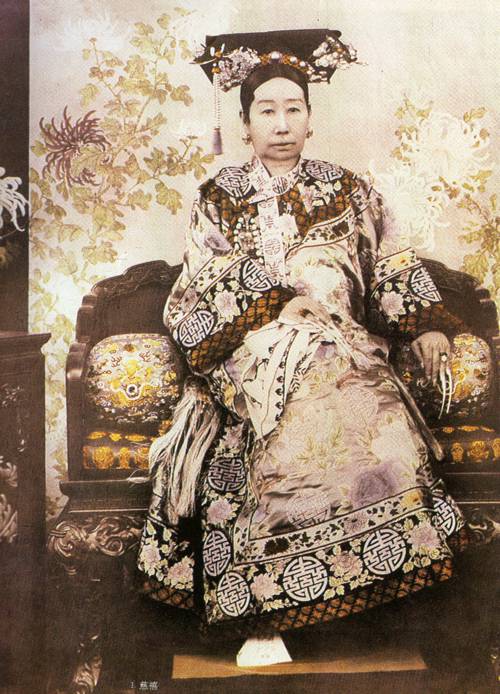
FAQ About Empress Dowager Cixi

Who was Empress Dowager Cixi?
Empress Dowager Cixi was one of the most powerful female figures in Chinese history, ruling China from behind the scenes for much of the late Qing dynasty. Born in 1835, she rose from a low-ranking concubine to become the de facto ruler of China following the death of her son, the Tongzhi Emperor, in 1861 until her death in 1908.

How did Cixi rise to power in the Qing court?
Cixi rose to power initially as a low-ranking concubine after giving birth to the Tongzhi Emperor, the only son of the Xianfeng Emperor. Recognizing her son as the heir, she gained significant political influence. Upon his ascension to the throne in 1861, Cixi co-ruled as regent with Empress Dowager Ci'an, her power growing with her shrewd political maneuvers.

What were some of Cixi's significant contributions to modernizing China?
Empress Dowager Cixi is credited with initiating several modernization projects in China, including the establishment of the modern Chinese navy, reforms in education, and modernization of infrastructure such as railways and telegraph lines. Her reign marked efforts towards self-strengthening, although her approach was conservative relative to more radical reformers of the time.

Was Empress Dowager Cixi considered a reformist or conservative ruler?
Empress Dowager Cixi is often seen as a paradoxical ruler, with tendencies towards both conservatism and reform. While she embraced certain reforms, particularly those aimed at strengthening military and industrial capacities, she was cautious and resisted more radical changes that threatened the dynastic order or traditional cultural values.

What controversies surrounded Cixi's rule?
Cixi's rule was marked by controversies, such as accusations of corruption, excessive spending, and manipulating imperial succession to maintain power. Critics pointed to her extravagent projects, like the Summer Palace, as evidence of misused funds that could have supported national defense or other critical needs during times of national crisis.

How did Cixi influence the ruling of the Qing dynasty despite being a woman?
Cixi managed to influence the Qing dynasty's policies through her political acumen, alliances within the court, and strategic appointments in key positions. As the mother of an emperor and later as regent, she exercised substantial control without officially bearing the title of emperor, making use of her status and intellect to command authority over court affairs.

What was the relationship between Cixi and the Boxer Rebellion?
The Boxer Rebellion of 1899–1901 was a significant crisis during Cixi's later years. Initially ambivalent, Cixi eventually threw her support behind the Boxers, viewing them as a potential force against foreign influence in China. This decision, however, led to increased foreign intervention and significant political and economic repercussions for China.

Did Cixi oppose or support foreign influence and trade in China?
Empress Dowager Cixi had a complicated relationship with foreign influence. While she was wary of Western powers and resistant to foreign control, she also recognized the necessity of adopting certain Western technologies and reforms to strengthen China. Her policies reflected a cautious balance, promoting modernization while trying to maintain sovereignty against increasing foreign pressures.

How did Cixi's death impact the Qing dynasty?
Cixi's death in 1908 marked the end of an era for the Qing dynasty, which was already weakened by internal strife and external pressures. Her passing precipitated a power vacuum and accelerated the decline of the dynasty, culminating in the 1911 revolution that led to the establishment of the Republic of China.

What role did Cixi play in the succession of the Qing emperors?
Cixi played a critical role in imperial succession, notably by ensuring her nephew, the Guangxu Emperor, succeeded her son after his death. Her influence persisted during Guangxu's reign, overshadowing his rule and maintaining regency, thus ensuring her control over decisions affecting the Qing dynasty's future.

How is Cixi viewed in modern China?
In modern China, Cixi is a controversial figure. Historically, she has been criticized for her conservatism and perceived hindrance to modernization. However, recent scholarship has attempted to reassess her legacy, recognizing her complex role in navigating foreign and domestic challenges during a turbulent era.

How did Cixi maintain power for so long?
Cixi maintained power through a combination of political acumen, strategic alliances, manipulation of court politics, and suppression of rivals. She adeptly used the conservatism of certain Qing factions to her advantage, balancing factions within the court to avoid any single group from gaining enough power to challenge her authority.

What were the key reforms introduced by Cixi during her reign?
Key reforms during Cixi's reign included modernizing the military, improving infrastructure with new railway and telegraph systems, and initiating the Hundred Days' Reform towards the end of her life, which suggested a more progressive shift although she ultimately curtailed it, fearing social instability and loss of control.

Why is Cixi often blamed for the decline of the Qing dynasty?
Cixi is often blamed for the Qing dynasty's decline due to her conservative policies that many argue delayed necessary reforms, and her focus on maintaining personal power over effective governance. Critics highlight her role in the Boxer Rebellion and the mismanagement of resources as significant factors contributing to the weakened state of the empire.

How did Cixi's policies affect China’s relationship with Western countries?
Cixi's policies affected China's relationship with Western countries significantly. Her oscillation between resistance and limited engagement led to tense diplomatic relations, compounded by incidents like the Boxer Rebellion which worsened Western perceptions and increased external pressures on China.

What architectural projects did Cixi sponsor during her rule?
Among the architectural projects sponsored by Cixi was the renovation of the Summer Palace, also known as the Imperial Garden, which became a symbol of her extravagant spending. This project diverted funds that were initially intended for naval expansion, sparking significant criticism.

How did Cixi handle internal rebellions during her rule?
Cixi faced several internal rebellions, the most notable being the Taiping and the Nian rebellions early in her regency, which she managed with military intervention aided by loyal generals. Her authoritarian approach helped contain these uprisings, although she relied heavily on traditional strategies of suppression rather than addressing underlying causes.

What was the Guangxu Emperor’s relationship with Cixi?
The Guangxu Emperor was Cixi's nephew and assumed the throne under her influence. Though he attempted to implement reforms during the Hundred Days' Reform, Cixi saw these as a threat to her power and placed him under house arrest, effectively nullifying his authority while she resumed total control.

Did Cixi implement any education reforms?
Yes, Cixi did implement educational reforms, most notably the abolition of the traditional imperial examination system, which had been a cornerstone of the Chinese bureaucracy for centuries. This was part of late efforts to modernize the country and introduce a more Western-style educational system.

What influence did Cixi have on culture and arts during her time?
Cixi was known for her support of the arts and culture, commissioning works that celebrated traditional Chinese aesthetics. She was an avid patron of Peking opera, an art form that reached new heights during her rule, and she encouraged artistic endeavors that bolstered the Qing court's cultural influence.
